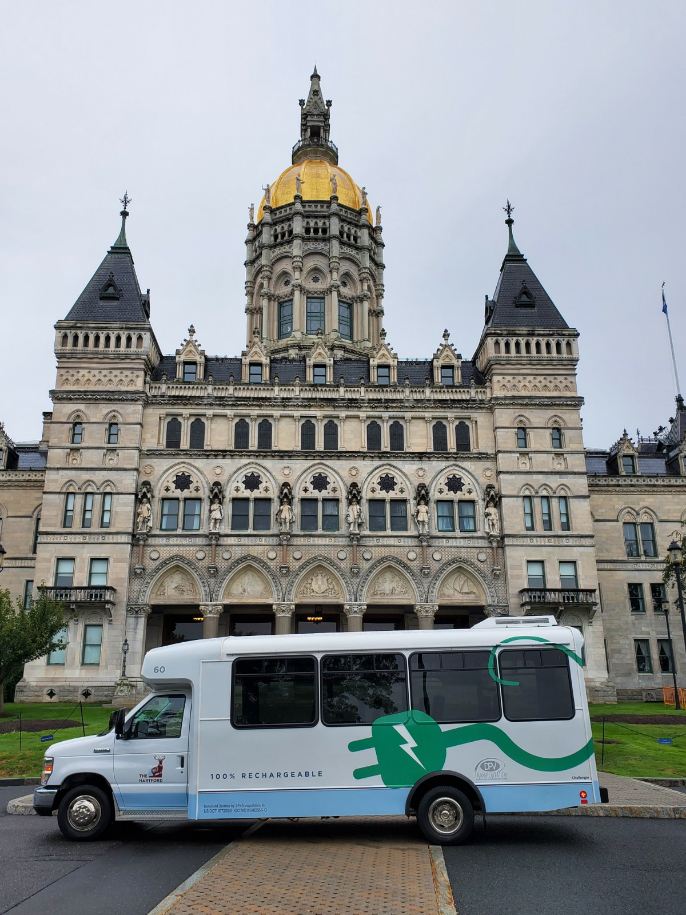In this day and age, it is hard to find a university or college that does not have in place a shuttle program at their campus. While the quality and extent of the university shuttle service can vary from one educational institution to another, the practice has shown numerous advantages of this concept.
One of the difficulties that large college campuses face is that they stretch across thousands of acres, which makes them difficult to navigate, and some areas are open for pedestrians only.
Campus shuttle programs help solve this problem. They are beneficial for students and university faculty staff, as they keep the entire community moving through a variety of fixed routes and schedules.
However, there is more to it than the flexibility and convenience of inter-campus transportation. Here is a breakdown of all the crucial benefits of shuttle bus programs for universities.
Campus Shuttle Programs Reduce Demand for On-Campus Parking
No university campus can function efficiently when access for both staff and students is hindered by insufficient parking capacity.
It’s not a secret that finding a free parking spot is often a challenging and time-consuming task, and many end up walking a good 20 minutes or even more to their “final destination.”
The majority of renowned companies that provide university shuttle services work with their clients to create a flexible schedule able to satisfy the specific needs and requirements of every university campus.
Such tailor-made plans and programs facilitate the on-time pick-up and drop-off service for university employees, faculty, and students.
This decreases the need for personal vehicles and significantly reduces the demand for on-campus parking.
More Efficient Land Usage
One of the beauties of the reduced demand for parking facilities is that the freed space can be used to make the university ecosystem a much better place to work, study, and have fun.
There are a plethora of ways to elevate the campus area. Depending on the university’s needs and budget, it can be a new building to accommodate more students, a sidewalk café for tasty breaks between lectures, bike lanes, or a couple of extra tennis courts. Alternatively, it can also be a magnificent garden or a green open space.
Cost-Effectiveness
Campus shuttle programs not only enhance mobility but are also of great value to universities.
Buying vehicles to meet the campus mobility needs are very expensive, not to mention pricey maintenance, high running costs, and salaries of drivers. Instead of hiring full-time employees and investing money in their own fleet, universities can offer their students, faculty, and staff quality and reliable transportation for a fraction of what they would spend otherwise.
Companies that provide a reliable campus shuttle program have hundreds of drivers available any minute and ready to meet the strictest requirements. All that being said, implementing a well-thought-out and targeted campus shuttle program is arguably the most cost-effective solution for a seamless transportation system within such a large ecosystem as a university.
Enhanced Campus Sustainability
Over the past years, universities across the country have been at the forefront of the green movement, promoting and implementing a wide range of sustainability initiatives. The strong desire to save our beautiful planet for future generations was reflected in a serious effort to minimize the use of private cars and as a result, cut down on carbon emissions.
Taking advantage of the quality university shuttle service not only means a smaller carbon footprint but also less fuel consumption, which is definitely a big thing nowadays. Greatly reduced air pollution and environmental noise are other benefits that can be easily achieved by making shuttle bus programs part of the growth strategy.

No doubt, such programs are great for saving money, which is very important for every university. However, they are equally great for creating a healthier environment both on a local and global scale.
More Effective Educational Process
Even though it may not be very obvious at first glance, the quality and accessibility of intra- and intercampus transportation have a strong impact on the effectiveness of the educational process.
According to the latest studies, the number of students who drop out of university because of long and stressful commuting has risen over the past years. Indeed, tight schedules are often hard to follow even for students of universities located in towns with a well-developed network of public transport, not to mention campuses located in remote and rural areas.
Campus shuttle programs have already proved to be a real game-changer when it comes to solving an array of different problems associated with daily commuting. They are a much better, more flexible, and far more efficient alternative to public transport. Shuttle buses usually stick to a pre-set schedule, picking up and dropping off students or university employees at specific stops, running between different campuses, residences, and dorms, or connecting the university with the surrounding community.
Comfortable Transportation for Everyone
Shuttle buses are typically equipped with a variety of amenities to ensure the ultimate comfort for every passenger. However, the set of hi-tech features goes beyond WI-FI, TVs, and air conditioning. Also accommodating special requests such as wheelchair-accessible transportation. The importance of this kind of service for students or faculty with mobility impairments is hard to overestimate.
Having a well-established campus shuttle program in place brings universities many benefits and helps save many transportation-related problems, significantly reduces demand for parking, and decreases fuel consumption. They represent the most cost-effective way to provide safe, reliable, and convenient transport for students, faculty, and staff.

